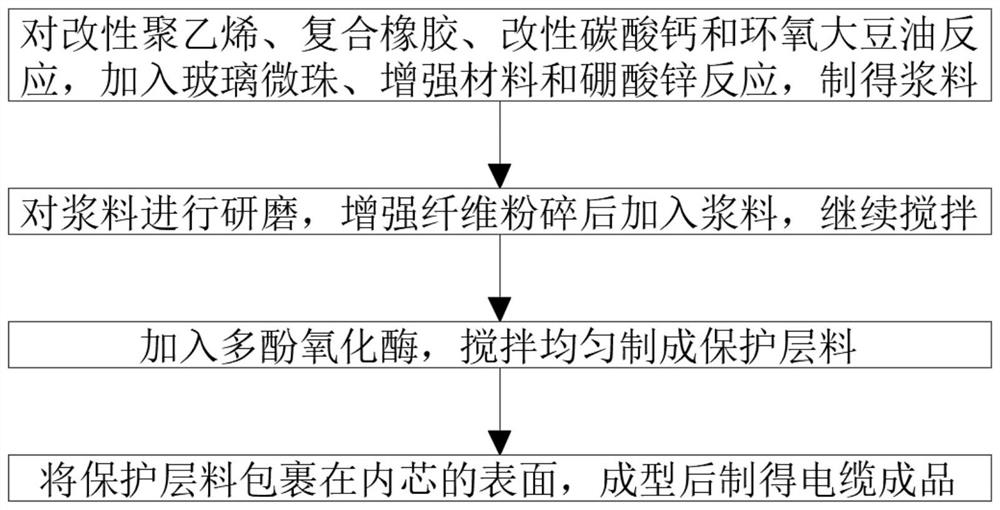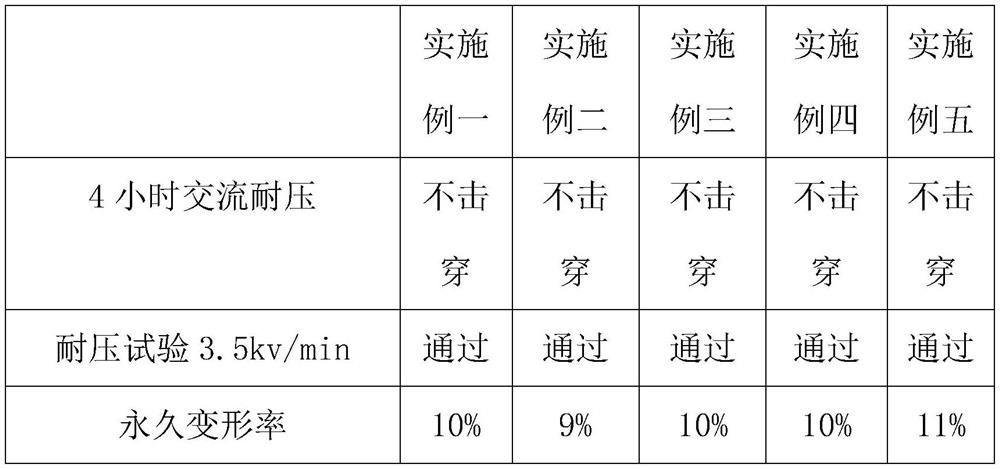Wire cable with good compression resistance and processing technology
A technology of wire and cable and compressive performance, applied in the field of wire and cable and processing technology, can solve the problems of low AC voltage resistance, damaged wires, poor cable compressive performance, etc., so as to improve the AC voltage resistance and reduce permanent deformation. rate, enhance the effect of compressive performance
- Summary
- Abstract
- Description
- Claims
- Application Information
AI Technical Summary
Problems solved by technology
Method used
Image
Examples
Embodiment Construction
[0022] The technical solutions in the embodiments of the present invention will be clearly and completely described below with reference to the accompanying drawings in the embodiments of the present invention. Obviously, the described embodiments are only a part of the embodiments of the present invention, but not all of the embodiments. Based on the embodiments of the present invention, all other embodiments obtained by those of ordinary skill in the art without creative efforts shall fall within the protection scope of the present invention.
[0023] refer to figure 1 , Example 1
[0024] In this embodiment, a wire and cable with good compressive performance is proposed, which includes an inner core and a protective layer wrapped on the surface of the inner core. The materials of the protective layer include 120 parts of modified polyethylene, 53 parts of compound rubber, 24 parts of Glass microspheres, 11 parts of modified calcium carbonate, 22 parts of reinforcing fibers...
PUM
 Login to View More
Login to View More Abstract
Description
Claims
Application Information
 Login to View More
Login to View More - R&D
- Intellectual Property
- Life Sciences
- Materials
- Tech Scout
- Unparalleled Data Quality
- Higher Quality Content
- 60% Fewer Hallucinations
Browse by: Latest US Patents, China's latest patents, Technical Efficacy Thesaurus, Application Domain, Technology Topic, Popular Technical Reports.
© 2025 PatSnap. All rights reserved.Legal|Privacy policy|Modern Slavery Act Transparency Statement|Sitemap|About US| Contact US: help@patsnap.com


